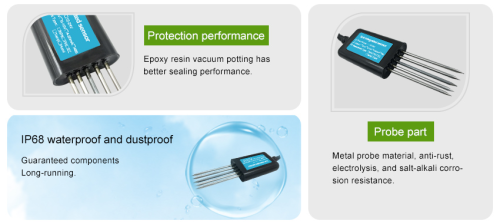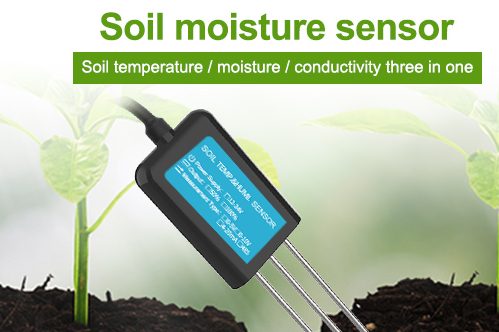Soil humidity sensor, also known as soil moisture sensors, are essential tools for monitoring and managing soil moisture levels in agricultural, environmental. These sensors provide valuable data that enables farmers, land managers, and scientists to make informed decisions about irrigation, crop management, and environmental conservation. In this article, we will explore the significance of soil humidity sensors, the technology behind these sensors, their applications in agriculture and environmental sustainability, and the impact of soil moisture data on various sectors.
The Significance of Soil Humidity Sensors
Soil humidity sensors are instrumental in understanding and managing soil moisture, a critical factor that directly impacts plant growth, water conservation, and ecosystem health. By measuring the moisture content in the soil, these sensors provide crucial information for optimizing irrigation practices, preventing waterlogging, and promoting sustainable land use. The data collected by soil humidity sensors is used to improve agricultural productivity, conserve water resources, and minimize environmental impact.
Technology Behind Soil Humidity Sensors
Soil humidity sensors utilize various technologies to measure the moisture content in the soil. Some of the commonly used technologies include:
Capacitance Sensors: Capacitance-based soil humidity sensors measure the dielectric constant of the soil, which is related to the soil moisture content. These sensors consist of electrodes that measure the capacitance of the soil, providing an indirect measurement of soil moisture.
Tensiometers: Tensiometers measure soil moisture by monitoring the tension or suction of water in the soil. These sensors typically consist of a porous ceramic cup connected to a water-filled tube, and the soil moisture level is determined by the pressure required to draw water from the soil into the sensor.
Time Domain Reflectometry (TDR) Sensors: TDR sensors use electromagnetic waves to measure soil moisture. By sending an electromagnetic pulse into the soil and measuring the time it takes for the pulse to return, TDR sensors can determine the soil moisture content based on the soil’s electrical properties.
Resistance Sensors: Resistance-based soil humidity sensors measure the electrical resistance of the soil, which changes with variations in soil moisture. These sensors typically consist of two electrodes that measure the resistance between them, providing a direct measurement of soil moisture.
Applications of Soil Humidity Sensors
Soil humidity sensors have diverse applications across agriculture, environmental management, and scientific research. Some of the key applications include:

Precision Agriculture: We use soil humidity sensor in precision agriculture to optimize irrigation schedules, improve water use efficiency, and prevent overwatering or underwatering of crops. By providing real-time data on soil moisture levels, these sensors enable farmers to make informed decisions about irrigation management.
Environmental Monitoring: We use soil humidity sensors in environmental monitoring projects to assess soil moisture in natural ecosystems, wetlands and forest areas. Monitoring soil moisture helps in understanding the impact of climate change, land use practices, and water availability on ecosystem health.
Research and Academic Studies: We use soil humidity sensor in scientific research to study the relationships between soil moisture, plant growth, and soil health. These sensors contribute to understanding the dynamics of water movement in the soil and its implications for ecosystem functioning.
Land Rehabilitation and Restoration: Soil humidity sensor play a crucial role in land rehabilitation and restoration projects by monitoring soil moisture levels in degraded or disturbed areas. This information helps in implementing effective revegetation and soil conservation strategies.
Impact of Soil Moisture Data on Various Sectors
The data collected by soil humidity sensor has a significant impact on various sectors, influencing decision-making processes and contributing to sustainable land management. Some of the key impacts of soil moisture data include:
Water Conservation: Soil humidity sensors enable efficient water use in agriculture by providing precise information on soil moisture, leading to reduced water consumption and minimized environmental impact.
Enhanced Crop Productivity: By optimizing irrigation practices and ensuring adequate soil moisture levels, soil humidity sensors contribute to improved crop yields and overall agricultural productivity.
Sustainable Land Use: Soil humidity sensors support sustainable land management practices by helping land managers and conservationists make informed decisions about soil moisture, promoting healthy ecosystems and natural resource conservation.
Climate Change Adaptation: Soil humidity sensors contribute to understanding the impacts of climate change on soil moisture dynamics, enabling adaptation strategies for agriculture and ecosystem resilience.
Efficient Water Resource Management: Soil humidity sensors aid in efficient water resource management by providing data for irrigation scheduling, water allocation, and drought monitoring, thus contributing to water security and resilience.
